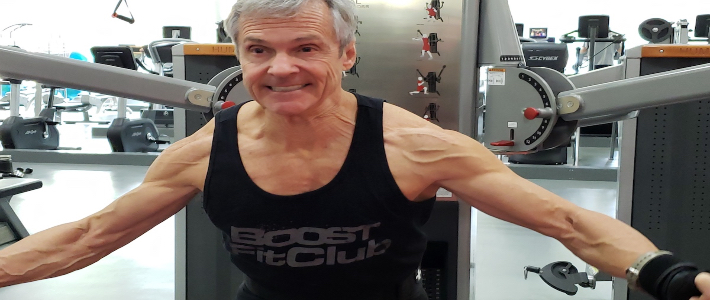Walking School Buses Offer Safe, Fun, Alternative to Driving
|Posted by Natania GoldbergWalk, Don’t Drive
The temptation to drive kids to school can be strong for parents with access to a car. The morning hustle can be especially difficult if you have multiple children attending different schools! I experienced this first hand growing up with my two brothers. Our parents had to juggle getting all three of us to school on time and get to their jobs. We always were on time and never missed a day. One of the many reasons I respect and love them so much.
A walking school bus is one way of making the pedestrian option more feasible. Local parents form a “walking bus” in order to get their kids to the same elementary and middle schools. The walking school bus website ( http://www.walkingschoolbus.org) suggests starting small with a few families, a route, and a schedule. It’s easiest to begin by talking to families who live in a concentrated area who need to get to the same schools. From there, you can recruit other families who are interested in their kids taking part.
The walking school buses provides protection in numbers and is a great way to interact safely in your community with your children. Kids also get the benefits of starting (or ending) the day with a healthy walk.
A Good Supplement to Gym Class
Most of us could use more exercise, and for kids, it’s especially important as their bodies grow and develop. At least 60 minutes of active play per day is recommended for children 6 years and older by the American Academy of Pediatrics.
With some school guidelines only mandating 20 minutes of recess per day. Any way to squeeze in more physical activity during our busy schedules will benefit your children tremendously.
“It really reinforces an extended sense of community and a village approach to parenting.”
This practical alternative to driving not only reduces carbon emissions but, it sends a positive message to your children. It encourages your children to be active and is an opportunity for you to connect with your community!
Why Runners over 50 Need to Lift Weights, Too
|Posted by Natania GoldbergLike a lot of lifelong runners, Grady Cash was so passionate about his sport that he never had much interest in lifting weights.
That changed a few years ago after he finished last in a short-distance race and noticed the guys who beat him were built differently. They had bigger shoulders, more muscle up top, and tighter waists than the long and lean look Grady and other runners traditionally show.
“They had more power, and they could run faster,” says Grady, now 71, of Nashville, Tennessee. “Frankly, they were a different body type.”
Grady decided to make a change in his exercise routine. Strength training helped him to improve his times, even set some records with his relay teams and reduce his running-related injuries.
“I think it’s essential as you get older to start hitting the gym for your health, to slow the aging process, and to help your running,” he says.
Grady’s not alone in believing so.
Strength Training Is Increasingly Important
Lifting weights, or other forms of resistance training, has been gaining traction among elite runners partly because humans lose muscle mass starting in midlife. That diversity also keeps you better able to handle normal daily life as you continue to mature.
A running-only focus can leave you lacking flexibility and functional diversity.
“The more different things you do, the more of an athlete you inherently are,” said physical therapist and author Jay Dicharry. “So, the question here is: What can you do to complement your running? Here is why strength training helps runners: You have to be able to put out more force in a shorter amount of time to run faster. But if all you do is run, you never develop the true high-end strength and high-power demands that you need.”
He Found It All True
Back in Nashville, Grady Cash learned all of that.
He used a trainer for the first couple of years and recommends it to people not familiar with strength training.
He works out five days a week and runs three to four days. His upper body is bigger, and he has more power and a stronger core. Grady says his metabolism and testosterone levels are better, too.
He even improved his race times, almost unheard of for runners as they get older, he said.
He’s not only competing better – he’s winning. Grady’s relay teams set three world records for their age groups last year. He says he couldn’t have done it without hitting the weights.
5 Ways to Beat the Comparison Complex
|Posted by Natania GoldbergDo you ever feel like the body you want is always just out of reach or, that there’s always somebody “better” than you?
It’s human nature to compare ourselves to others. Now, more than ever we are now living in an era where everything is accessible by our fingertips in a matter of seconds.
Here’s how to stop those unwanted, negative feelings about your body and free yourself from the frustration of constant comparison.
#1 SET HABIT BASED GOALS
You may have a specific goal such as, an ideal pant size or to bench 300 pounds. These goals or benchmarks might seem meaningful, but for some, they can take a little longer to achieve.
By setting goals that require a certain outcome, anything that falls short can feel like a failure. Rather than focus on the end result, concentrate on completing daily actions. This will help you shift your mindset away from comparison and give you more opportunities to celebrate your successful efforts!
#2 PUT THINGS IN PERSPECTIVE – EVERY SINGLE DAY
We often obsess over what we don’t like about our bodies. Reminding yourself what really matters in life can help dilute those negatives feelings.
Daily journaling can give you a major mental boost with a new perspective. Do it routinely and you will transform your mindset from a place of comparison to a more appreciative state.
#3 KNOWING YOUR COMPARISON TRIGGERS
Ask yourself is there a specific place, person or practice that makes you feel, “not good enough?”
It could be anything from your favorite Instagram food blogger to an advanced fitness class where you struggle to keep up. If you can put your “trigger” for self-comparison on hold, you can get the space you need to reassess your situation and decide what you really want.
#4 REVAMP YOUR SOCIAL NETWORKS
Look through your friends and who you’re following. Ask yourself whether each person or account brings you joy. If not, unfriend/unfollow! As my good friend, Robert J. Cappuccio would say, “Make your list.” Start following people who inspire you, educate you or just make you laugh. Make this your happy place!
#5 SEEK PURPOSEFUL CONNECTIONS
Having a connection with a community of people who support and uplift you is crucial! Whether it is online or in real life, sharing stories and struggles with others can build a strong connection. Genuine conversations beat silent comparison.
Turn your attention to those who love you for who you are… and who help you love yourself. If you pay close attention, you might finally realize what they see in you.
Walking School Buses Offer Safe, Fun, Alternative to Driving
|Posted by Natania GoldbergWalk, Don’t Drive
The temptation to drive kids to school can be strong for parents with access to a car. The morning hustle can be especially difficult if you have multiple children attending different schools! I experienced this first hand growing up with my two brothers. Our parents had to juggle getting all three of us to school on time and get to their jobs. We always were on time and never missed a day. One of the many reasons I respect and love them so much.
A walking school bus is one way of making the pedestrian option more feasible. Local parents form a “walking bus” in order to get their kids to the same elementary and middle schools. The walking school bus website ( http://www.walkingschoolbus.org) suggests starting small with a few families, a route, and a schedule. It’s easiest to begin by talking to families who live in a concentrated area who need to get to the same schools. From there, you can recruit other families who are interested in their kids taking part.
The walking school buses provides protection in numbers and is a great way to interact safely in your community with your children. Kids also get the benefits of starting (or ending) the day with a healthy walk.
A Good Supplement to Gym Class
Most of us could use more exercise, and for kids, it’s especially important as their bodies grow and develop. At least 60 minutes of active play per day is recommended for children 6 years and older by the American Academy of Pediatrics.
With some school guidelines only mandating 20 minutes of recess per day. Any way to squeeze in more physical activity during our busy schedules will benefit your children tremendously.
“It really reinforces an extended sense of community and a village approach to parenting.”
This practical alternative to driving not only reduces carbon emissions but, it sends a positive message to your children. It encourages your children to be active and is an opportunity for you to connect with your community!
Why Runners over 50 Need to Lift Weights, Too
|Posted by Natania GoldbergLike a lot of lifelong runners, Grady Cash was so passionate about his sport that he never had much interest in lifting weights.
That changed a few years ago after he finished last in a short-distance race and noticed the guys who beat him were built differently. They had bigger shoulders, more muscle up top, and tighter waists than the long and lean look Grady and other runners traditionally show.
“They had more power, and they could run faster,” says Grady, now 71, of Nashville, Tennessee. “Frankly, they were a different body type.”
Grady decided to make a change in his exercise routine. Strength training helped him to improve his times, even set some records with his relay teams and reduce his running-related injuries.
“I think it’s essential as you get older to start hitting the gym for your health, to slow the aging process, and to help your running,” he says.
Grady’s not alone in believing so.
Strength Training Is Increasingly Important
Lifting weights, or other forms of resistance training, has been gaining traction among elite runners partly because humans lose muscle mass starting in midlife. That diversity also keeps you better able to handle normal daily life as you continue to mature.
A running-only focus can leave you lacking flexibility and functional diversity.
“The more different things you do, the more of an athlete you inherently are,” said physical therapist and author Jay Dicharry. “So, the question here is: What can you do to complement your running? Here is why strength training helps runners: You have to be able to put out more force in a shorter amount of time to run faster. But if all you do is run, you never develop the true high-end strength and high-power demands that you need.”
He Found It All True
Back in Nashville, Grady Cash learned all of that.
He used a trainer for the first couple of years and recommends it to people not familiar with strength training.
He works out five days a week and runs three to four days. His upper body is bigger, and he has more power and a stronger core. Grady says his metabolism and testosterone levels are better, too.
He even improved his race times, almost unheard of for runners as they get older, he said.
He’s not only competing better – he’s winning. Grady’s relay teams set three world records for their age groups last year. He says he couldn’t have done it without hitting the weights.
5 Ways to Beat the Comparison Complex
|Posted by Natania GoldbergDo you ever feel like the body you want is always just out of reach or, that there’s always somebody “better” than you?
It’s human nature to compare ourselves to others. Now, more than ever we are now living in an era where everything is accessible by our fingertips in a matter of seconds.
Here’s how to stop those unwanted, negative feelings about your body and free yourself from the frustration of constant comparison.
#1 SET HABIT BASED GOALS
You may have a specific goal such as, an ideal pant size or to bench 300 pounds. These goals or benchmarks might seem meaningful, but for some, they can take a little longer to achieve.
By setting goals that require a certain outcome, anything that falls short can feel like a failure. Rather than focus on the end result, concentrate on completing daily actions. This will help you shift your mindset away from comparison and give you more opportunities to celebrate your successful efforts!
#2 PUT THINGS IN PERSPECTIVE – EVERY SINGLE DAY
We often obsess over what we don’t like about our bodies. Reminding yourself what really matters in life can help dilute those negatives feelings.
Daily journaling can give you a major mental boost with a new perspective. Do it routinely and you will transform your mindset from a place of comparison to a more appreciative state.
#3 KNOWING YOUR COMPARISON TRIGGERS
Ask yourself is there a specific place, person or practice that makes you feel, “not good enough?”
It could be anything from your favorite Instagram food blogger to an advanced fitness class where you struggle to keep up. If you can put your “trigger” for self-comparison on hold, you can get the space you need to reassess your situation and decide what you really want.
#4 REVAMP YOUR SOCIAL NETWORKS
Look through your friends and who you’re following. Ask yourself whether each person or account brings you joy. If not, unfriend/unfollow! As my good friend, Robert J. Cappuccio would say, “Make your list.” Start following people who inspire you, educate you or just make you laugh. Make this your happy place!
#5 SEEK PURPOSEFUL CONNECTIONS
Having a connection with a community of people who support and uplift you is crucial! Whether it is online or in real life, sharing stories and struggles with others can build a strong connection. Genuine conversations beat silent comparison.
Turn your attention to those who love you for who you are… and who help you love yourself. If you pay close attention, you might finally realize what they see in you.




Nothing Found
Sorry, no posts matched your criteria